-
 Bitcoin
Bitcoin $114500
-0.31% -
 Ethereum
Ethereum $3648
1.11% -
 XRP
XRP $3.033
-0.27% -
 Tether USDt
Tether USDt $0.9999
-0.01% -
 BNB
BNB $758.5
-0.32% -
 Solana
Solana $167.5
1.48% -
 USDC
USDC $0.9998
-0.02% -
 TRON
TRON $0.3331
0.74% -
 Dogecoin
Dogecoin $0.2039
0.25% -
 Cardano
Cardano $0.7419
-0.46% -
 Hyperliquid
Hyperliquid $39.21
2.66% -
 Stellar
Stellar $0.4049
-1.95% -
 Sui
Sui $3.483
-0.56% -
 Bitcoin Cash
Bitcoin Cash $570.8
2.89% -
 Chainlink
Chainlink $16.67
-0.57% -
 Hedera
Hedera $0.2470
-1.57% -
 Ethena USDe
Ethena USDe $1.001
0.00% -
 Avalanche
Avalanche $22.36
1.52% -
 Litecoin
Litecoin $123.4
4.35% -
 UNUS SED LEO
UNUS SED LEO $8.989
0.09% -
 Toncoin
Toncoin $3.324
-2.40% -
 Shiba Inu
Shiba Inu $0.00001219
-1.30% -
 Uniswap
Uniswap $9.811
2.54% -
 Polkadot
Polkadot $3.662
-0.07% -
 Monero
Monero $295.5
-3.85% -
 Dai
Dai $1.000
0.01% -
 Bitget Token
Bitget Token $4.345
0.24% -
 Cronos
Cronos $0.1380
0.95% -
 Pepe
Pepe $0.00001044
-1.14% -
 Ethena
Ethena $0.5981
-4.24%
What is Omnichain interoperability protocol?
Omnichain interoperability enables seamless data and asset exchange across blockchains, enhancing liquidity, functionality, and reducing transaction friction.
Apr 11, 2025 at 08:36 pm
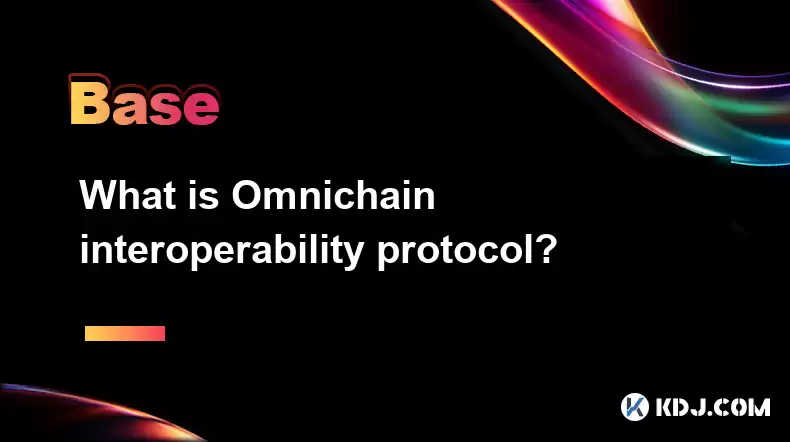
The Omnichain interoperability protocol refers to a technology designed to enable seamless interaction and data exchange between different blockchain networks. This protocol aims to solve the issue of blockchain isolation by allowing assets, data, and functionalities to move freely across various chains. In essence, Omnichain interoperability facilitates a more interconnected and efficient blockchain ecosystem, where users can leverage the strengths of multiple blockchains without being limited by their inherent boundaries.
Understanding the Need for Omnichain Interoperability
Blockchain technology, while revolutionary, has faced challenges due to the fragmentation of networks. Each blockchain operates as a separate entity with its own set of rules, consensus mechanisms, and smart contract capabilities. This isolation has led to a fragmented ecosystem where transferring assets or data between different blockchains is cumbersome and often requires third-party services. Omnichain interoperability protocols address this by creating a standardized method for blockchains to communicate and transact with one another, thus enhancing the overall utility and adoption of blockchain technology.
Key Components of Omnichain Interoperability Protocols
To achieve seamless interoperability, Omnichain protocols incorporate several key components:
Cross-Chain Bridges: These are specialized mechanisms that allow the transfer of assets and data between different blockchains. They work by locking assets on one blockchain and minting equivalent tokens on another, ensuring that the total supply remains constant.
Inter-Blockchain Communication (IBC): This component enables direct communication between blockchains, allowing them to send and receive messages securely. IBC protocols often use cryptographic proofs to ensure the integrity and authenticity of the data being transferred.
Atomic Swaps: These are smart contract-enabled transactions that allow the exchange of cryptocurrencies between different blockchains without the need for intermediaries. Atomic swaps ensure that either both parties receive their respective assets or the transaction is canceled, maintaining trustless exchanges.
Decentralized Oracles: These are external data feeds that provide real-world information to smart contracts on different blockchains. By integrating decentralized oracles, Omnichain protocols can enable smart contracts to interact with data from multiple sources, enhancing their functionality and applicability.
How Omnichain Interoperability Works
The process of achieving Omnichain interoperability involves several steps and technologies working in tandem. Here's a detailed look at how it works:
Initialization: The process begins with the initialization of a cross-chain bridge or an IBC protocol between the source and destination blockchains. This involves setting up the necessary infrastructure and smart contracts to facilitate communication and asset transfer.
Asset Locking: Once the bridge is established, assets from the source blockchain are locked in a smart contract. This action is recorded on the blockchain, ensuring transparency and immutability.
Token Minting: On the destination blockchain, equivalent tokens are minted and allocated to the recipient's address. These tokens represent the locked assets on the source chain and can be used within the new ecosystem.
Data Transfer: Alongside asset transfer, data can also be sent between blockchains using IBC protocols. This involves creating and verifying cryptographic proofs to ensure the data's integrity during transmission.
Unlocking and Burning: When the recipient wants to move the assets back to the original blockchain, the process is reversed. The tokens on the destination chain are burned, and the corresponding assets on the source chain are unlocked and returned to the user.
Benefits of Omnichain Interoperability
The implementation of Omnichain interoperability protocols offers numerous benefits to the blockchain ecosystem:
Increased Liquidity: By enabling assets to move freely across different blockchains, Omnichain protocols increase the overall liquidity of the market. This allows users to access a broader range of assets and trading opportunities.
Enhanced Functionality: Smart contracts on different blockchains can interact with each other, enabling more complex and versatile decentralized applications (dApps). This integration can lead to the development of new use cases and functionalities.
Reduced Friction: The ability to transfer assets and data without intermediaries reduces the friction associated with cross-chain transactions. This leads to faster and more cost-effective exchanges.
Improved Scalability: By distributing the load across multiple blockchains, Omnichain interoperability can help improve the overall scalability of the blockchain ecosystem. This is particularly beneficial for networks that face congestion and high transaction fees.
Challenges and Considerations
While Omnichain interoperability offers significant advantages, it also comes with its own set of challenges and considerations:
Security Risks: The integration of multiple blockchains increases the attack surface, making it crucial to implement robust security measures. Cross-chain bridges, in particular, are vulnerable to exploits and hacks, necessitating continuous monitoring and updates.
Standardization: Achieving interoperability requires a high degree of standardization across different blockchain networks. This can be challenging given the diverse nature of existing blockchains and their varying protocols.
Regulatory Compliance: As assets move across different jurisdictions, ensuring compliance with local regulations becomes complex. Omnichain protocols must navigate these regulatory landscapes to ensure seamless and legal operations.
User Experience: For widespread adoption, the user experience must remain simple and intuitive. Complex processes and technical jargon can deter users from engaging with Omnichain solutions.
Examples of Omnichain Interoperability Protocols
Several projects are working on developing and implementing Omnichain interoperability protocols. Some notable examples include:
Cosmos: The Cosmos network uses the Inter-Blockchain Communication (IBC) protocol to enable communication between different blockchains. It aims to create an "Internet of Blockchains" where various networks can interact seamlessly.
Polkadot: Polkadot facilitates interoperability through its relay chain, which connects multiple parachains (parallel blockchains). This architecture allows for the transfer of any type of data or asset across its ecosystem.
Chainlink: While primarily known for its decentralized oracle network, Chainlink also works on cross-chain interoperability solutions. Its Cross-Chain Interoperability Protocol (CCIP) aims to enable secure and reliable communication between different blockchains.
LayerZero: LayerZero is a protocol that enables omnichain messaging and asset transfers without the need for third-party bridges. It focuses on providing a decentralized and secure method for interoperability.
Frequently Asked Questions
Q1: How does Omnichain interoperability differ from traditional blockchain interoperability?
A1: Traditional blockchain interoperability often relies on centralized bridges or third-party services to facilitate asset transfers between different blockchains. In contrast, Omnichain interoperability aims to provide a more decentralized and seamless approach by integrating cross-chain communication protocols directly into the blockchain networks. This reduces reliance on intermediaries and enhances security and efficiency.
Q2: Can Omnichain interoperability be used for decentralized finance (DeFi) applications?
A2: Yes, Omnichain interoperability can significantly enhance DeFi applications by allowing them to access liquidity and assets from multiple blockchains. This can lead to more robust and versatile DeFi platforms that can leverage the strengths of different networks, such as Ethereum's smart contract capabilities and the scalability of other layer-1 solutions.
Q3: What are the potential risks associated with using Omnichain interoperability protocols?
A3: The primary risks associated with Omnichain interoperability protocols include security vulnerabilities, particularly in cross-chain bridges, and the complexity of ensuring regulatory compliance across different jurisdictions. Additionally, the lack of standardization across blockchains can pose challenges in achieving seamless interoperability.
Q4: How can developers implement Omnichain interoperability in their projects?
A4: Developers can implement Omnichain interoperability by integrating existing protocols like IBC or CCIP into their blockchain projects. This involves setting up smart contracts for asset locking and token minting, as well as ensuring secure communication channels between different networks. Developers should also stay updated on the latest advancements and best practices in the field to ensure the security and efficiency of their solutions.
Disclaimer:info@kdj.com
The information provided is not trading advice. kdj.com does not assume any responsibility for any investments made based on the information provided in this article. Cryptocurrencies are highly volatile and it is highly recommended that you invest with caution after thorough research!
If you believe that the content used on this website infringes your copyright, please contact us immediately (info@kdj.com) and we will delete it promptly.
- Uniswap Valuation Under the Microscope: Bitwise CIO's Perspective
- 2025-08-05 23:10:12
- Coinbase's $2 Billion Convertible Notes: A Bold Move or Risky Bet?
- 2025-08-05 23:10:12
- Inveniam, MANTRA, and Real-World Assets: Forging a New DeFi Frontier
- 2025-08-05 22:30:12
- Cyprus Investor's $448K Crypto Loss: An Email Hack Wake-Up Call for Crypto Exchanges
- 2025-08-05 22:30:12
- Solana Memecoin Mania: Trader Profit Secrets Revealed!
- 2025-08-05 20:30:13
- POL Price Rebound: Will Consolidation Lead to a Breakout?
- 2025-08-05 20:30:13
Related knowledge
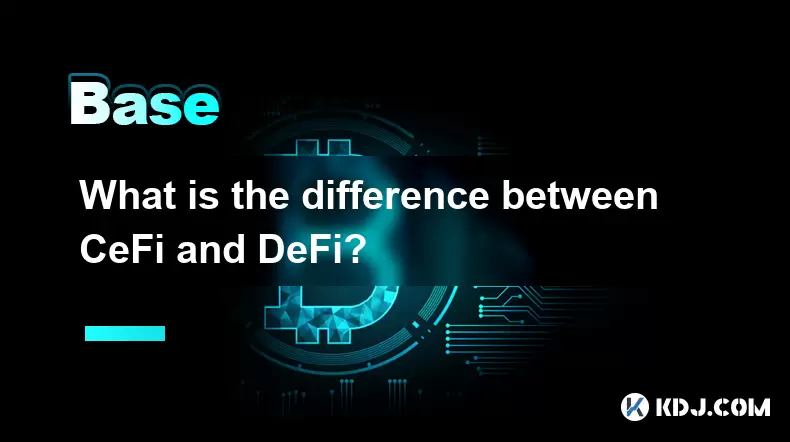
What is the difference between CeFi and DeFi?
Jul 22,2025 at 12:28am
Understanding CeFi and DeFiIn the world of cryptocurrency, CeFi (Centralized Finance) and DeFi (Decentralized Finance) represent two distinct financia...
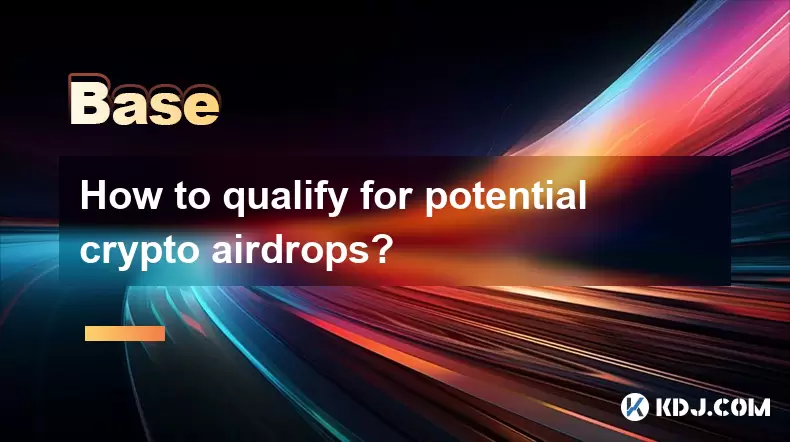
How to qualify for potential crypto airdrops?
Jul 23,2025 at 06:49am
Understanding What Crypto Airdrops AreCrypto airdrops refer to the distribution of free tokens or coins to a large number of wallet addresses, often u...
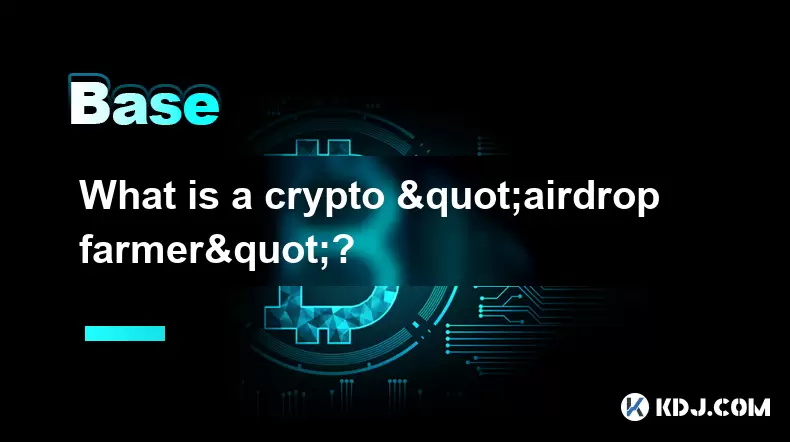
What is a crypto "airdrop farmer"?
Jul 24,2025 at 10:22pm
Understanding the Role of a Crypto 'Airdrop Farmer'A crypto 'airdrop farmer' refers to an individual who actively participates in cryptocurrency airdr...
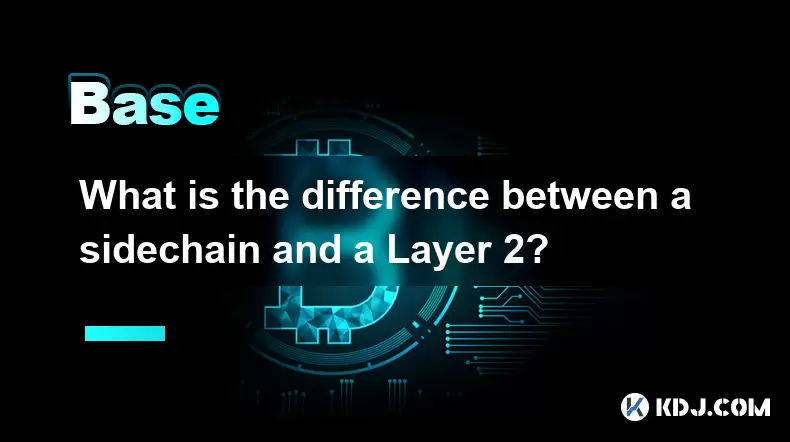
What is the difference between a sidechain and a Layer 2?
Jul 20,2025 at 11:35pm
Understanding the Concept of SidechainsA sidechain is a separate blockchain that runs parallel to the main blockchain, typically the mainnet of a cryp...
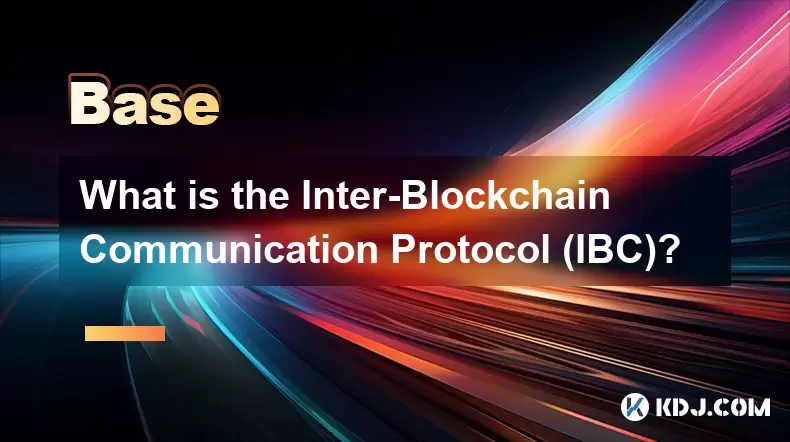
What is the Inter-Blockchain Communication Protocol (IBC)?
Jul 19,2025 at 10:43am
Understanding the Inter-Blockchain Communication Protocol (IBC)The Inter-Blockchain Communication Protocol (IBC) is a cross-chain communication protoc...
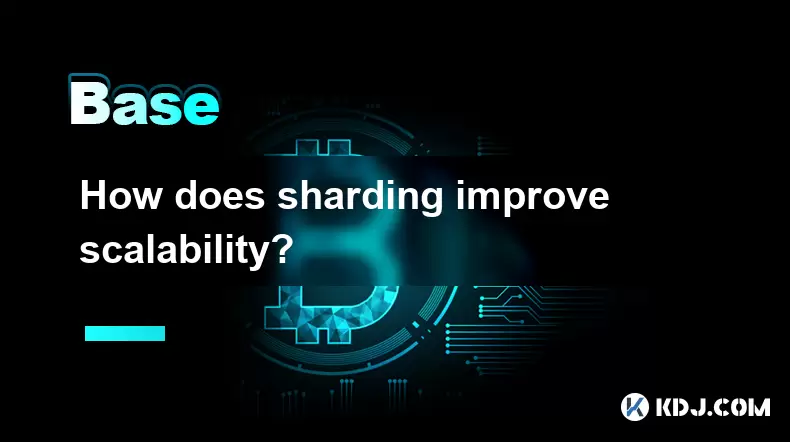
How does sharding improve scalability?
Jul 20,2025 at 01:21am
Understanding Sharding in BlockchainSharding is a database partitioning technique that is increasingly being adopted in blockchain technology to enhan...

What is the difference between CeFi and DeFi?
Jul 22,2025 at 12:28am
Understanding CeFi and DeFiIn the world of cryptocurrency, CeFi (Centralized Finance) and DeFi (Decentralized Finance) represent two distinct financia...

How to qualify for potential crypto airdrops?
Jul 23,2025 at 06:49am
Understanding What Crypto Airdrops AreCrypto airdrops refer to the distribution of free tokens or coins to a large number of wallet addresses, often u...

What is a crypto "airdrop farmer"?
Jul 24,2025 at 10:22pm
Understanding the Role of a Crypto 'Airdrop Farmer'A crypto 'airdrop farmer' refers to an individual who actively participates in cryptocurrency airdr...

What is the difference between a sidechain and a Layer 2?
Jul 20,2025 at 11:35pm
Understanding the Concept of SidechainsA sidechain is a separate blockchain that runs parallel to the main blockchain, typically the mainnet of a cryp...

What is the Inter-Blockchain Communication Protocol (IBC)?
Jul 19,2025 at 10:43am
Understanding the Inter-Blockchain Communication Protocol (IBC)The Inter-Blockchain Communication Protocol (IBC) is a cross-chain communication protoc...

How does sharding improve scalability?
Jul 20,2025 at 01:21am
Understanding Sharding in BlockchainSharding is a database partitioning technique that is increasingly being adopted in blockchain technology to enhan...
See all articles

























































































